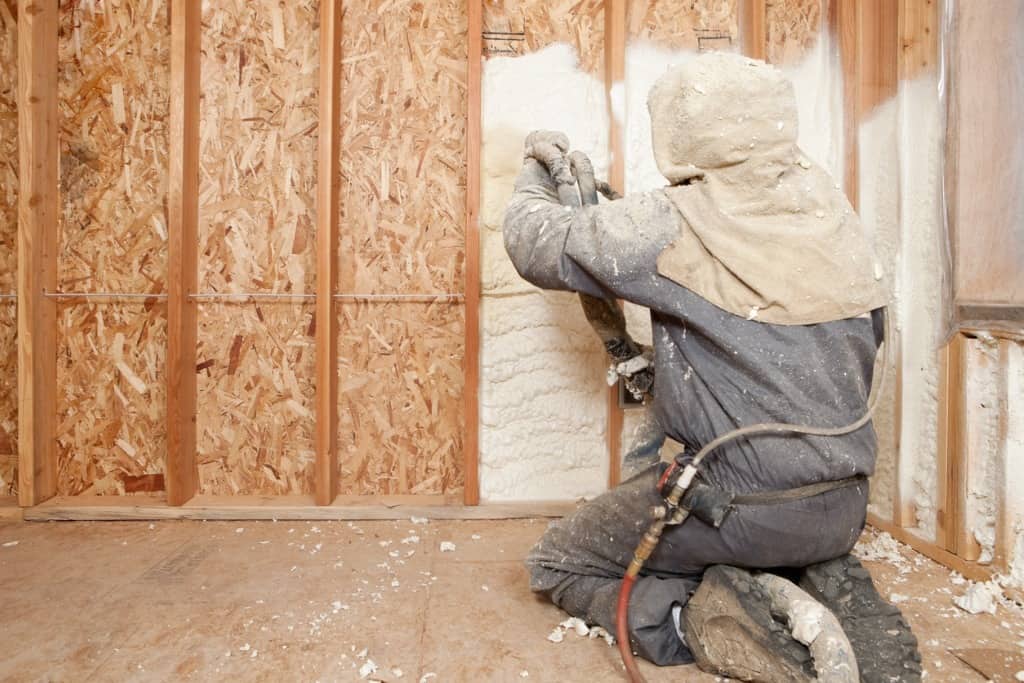
Winter’s extreme cold spells make it difficult for homes to maintain pleasant temperatures. Despite having thermostats set to maintain reasonable temperatures, many homeowners find it challenging to keep their interiors warm.
One common problem is the stack effect, the passage of air from the bottom of your home to the top and vice versa. Warm air rises to the top of your house, causing outside air to enter the lower level of your home. It results in excessive energy bills because you can’t control your home’s temperature, and it brings in allergens and outside contaminants.
What Is the Stack Effect?
The stack effect is air movement that negatively impacts your monthly energy expenditures and your home’s comfort level. Air enters your home through crawl spaces or basements, travels up through your floors and walls, and exits through your attic. This is the cold air in the winter and the hot air in the summer that puts a strain on your air conditioner and furnace.
Most homes experience the stack effect as a result of faults and pressure differences in the structural envelope. It can severely affect your comfort if you aren’t cautious.
How Does the Stack Effect Work?
Warm air rises in a house during the winter. This pressurizes the house’s top, forcing hot air out while sucking cold air in at the bottom.
In an air-conditioned house in the summer, the stack effect is reversed because the warmer air is outside. Cool inside air tends to fall and get forced out at the home’s bottom, allowing hot air to enter at the top.
The stack effect is determined by two factors: the residential property’s height and the temperature difference inside and outside of the house. The pressures created are greater when the temperature difference is higher and the property is taller.
Positive and negative pressures are greatest at the bottom and top, and neutral pressures are located somewhere in the middle. The bottom has high negative pressure, the top has high positive pressure, and the middle, or “neutral pressure plane,” is just in the sweet spot in the winter model.
The positive and negative pressure peaks are reversed in the summer.
Different Stack Effect Problems
The main issue with the stack effect is that the taller your home is, the more problems you’ll have. To be more aware of the problems, here are the most common issues that may occur with the stack effect.
It Makes Your Home Uncomfortable
Home dwellers on the upper floors get overheated in the winter, so they open windows. As a result of the relief in pressure at the top, cold air is coming in at the bottom, resulting in individuals on the lower floors raising the thermostat.
The problem can escalate quickly in some residential properties with poor insulation and air sealing between levels. The overheated penthouse residents open their windows, causing those on the ground floor to freeze.
It Can Cause Moisture Damage
Moisture follows air currents; therefore, moisture will condense on cold surfaces in any part of a house where there is a considerable movement of air between the interior and the exterior.
The effects of freeze-thaw cycles can sometimes be seen on brick buildings, when damp air builds in the brick, causing efflorescence, discoloration, and spalling.
Moisture penetration ruins structures and poses health risks to residents. However, the issues aren’t limited to brick. Condensation can occur anywhere there is a pulling of moist outside air pressure—or pushing moist inside air —into the wall cavity, resulting in decay and mold.
It Causes Energy Loss
Your heating system will have to work longer and harder to maintain appropriate inside temperatures as hot air leaves the house and cold air enters.
For example, during the winter when the stack effect is strongest, hot air is constantly exiting and being replaced by an equivalent volume of the cold air outside. You’ll be spending a lot of money to stay warm because the cycle runs continuously.
There are also major problems if the stack effect is not planned properly, especially in tall structures. Here are several examples.
- Stress on HVAC equipment as it tries to cope with air losses or increased demand. Inefficient HVAC systems cost more in terms of energy and maintenance, and poor temperature control reduces comfort.
- Diffusion of odors from the outdoors or between residential units.
- Depending on the situation, doors and elevators may require more force to open or close, or they may slam quickly.
- Noise is produced by air moving through cracks.
- Air movement has the potential to contribute to the spread of flames and smoke during a fire. Sprinkler system piping may freeze in some building sections exposed to the coldest airflow.
You have a lot of air movement just in the attic, which will aggravate moisture issues and lead to mold and mildew growth, as well as cause damage to any insulation you have up there.
The only insulation that will not be destroyed in this situation is spray foam, which is installed in place and also forms an air seal.
How to Prevent the Stack Effect in Your Home
Air Sealing
Sealing up those air gaps makes it difficult for indoor air to exit and outdoor air to enter, lessening the stack effect in your home, boosting energy efficiency, and minimizing energy waste.
Creating an air seal is the simplest way to eliminate the stack effect. An experienced home performance contractor uses professional air sealing and spray foam insulation to do this. You want an air seal around your entire living space, starting at the foundation where the air enters and ending at the top where it exits.
Keep in mind that air-sealing your walls and nothing else will actually increase the stack effect. The best solution for constructing an air seal is to air seal the entire house.
For example, if you have an air-sealed basement area, you don’t get that air coming in from the bottom which is the greatest cause of the stack effect. When you air-seal your outside walls, you also seal gaps around the windows and outlets to prevent air from entering.
Finally, by preventing air from entering and leaking from your attic, you are effectively sealing your home’s environment. This type of air seal will make your home more pleasant and energy-efficient, resulting in lower monthly electricity bills.
 Insulation
Insulation
The stack effect causes moisture to enter your home, where it can freeze in the attic and roof during the winter. Here is where attic insulation enters the picture.
The stack effect occurs because your attic has a space where warm air may escape at its greatest point. Attic insulation is one of the best ways to prevent this from happening. The space between your top floor and your attic is the most vital to insulate.
Warm air will escape through the slightest openings or air ducts as it reaches your attic. Remember that, while it’s critical to have adequate insulation throughout your home, it’s the attic that requires the most attention.
Ventilation
Natural ventilation can save homeowners up to 30% on their utility bills. Home design features should focus on mixing fresh air with existing air and regulating the stack effect within the property.
Interior walls and transom windows divert flow through occupied areas. An indirect path allows for the mixing of fresher air with stale air as well as the removal of the latter.
Interior exhaust openings should be higher than supply openings so that stale air is swept up and out by the stack effect. New structures with natural ventilation should be placed to catch the wind in the summer and block the cold temperature exposure in the winter.
Humidity control is not included in natural ventilation. The height and width of a structure are important considerations.
Natural ventilation efforts alone will not assist central portions of very large houses. Furthermore, the stack effect will not result in significant airflow in buildings with low ceilings. It’s possible that you’ll need fan-assisted ventilation.
Upgrade Your Home Insulation
The stack effect impacts all buildings in some way. The effect may hardly be noticeable in single-story, single-family homes. However, as we’ve seen, the stack effect should be taken into account while designing such a structure.
You now understand the stack effect and how it affects your home’s comfort and energy efficiency. Allowing the stack effect to produce drafts and discomfort is not a good idea. Start today to make your home more comfortable!
If you need professional attic insulation installation, give our A+ Insulation team of friendly experts a call. We’ll be able to offer you the insulation guidance you need. Request a quote or schedule an appointment today at 913-281-2250 or 816-265-1947.